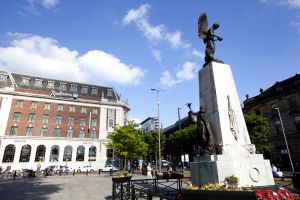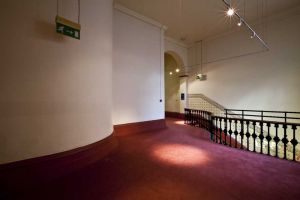Leeds Town Hall was built between 1853 and 1858 on Park Lane (now The Headrow), Leeds, West Yorkshire, England, to a design by architect Cuthbert Brodrick
The Town Hall is one of the largest town halls in the United Kingdom and as of 2008 it is the eighth tallest building in Leeds. It was opened by Queen Victoria, highlighting its status as an important civic structure. It is a Grade I listed building.
With a height of 225 feet (68.6 m) it was the tallest building in Leeds from its construction in 1858 until 1966, when it lost the title to the Park Plaza Hotel, which stands 8 metres (26 ft) taller at 77 metres (253 ft). It has held the title longer than any other building, a record 108 years. The distinctive clock tower, which serves as a symbol of Leeds was not part of the initial design but was added by Brodrick in 1856 as the civic leaders sought to make an even grander statement.






























